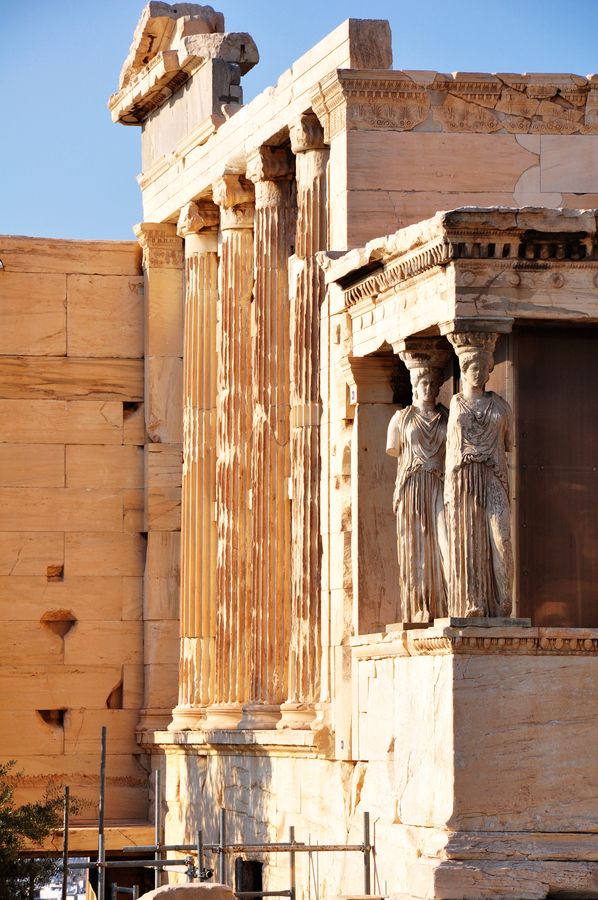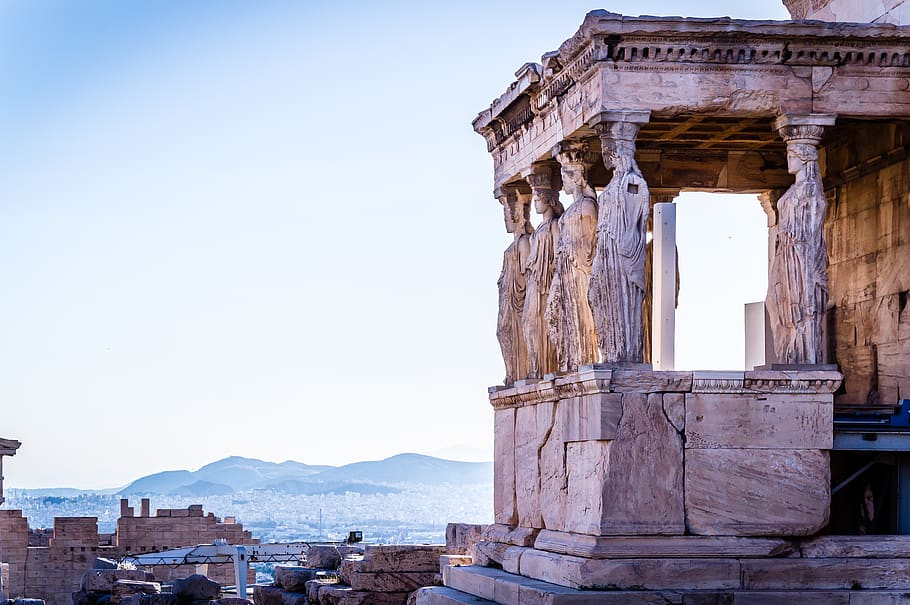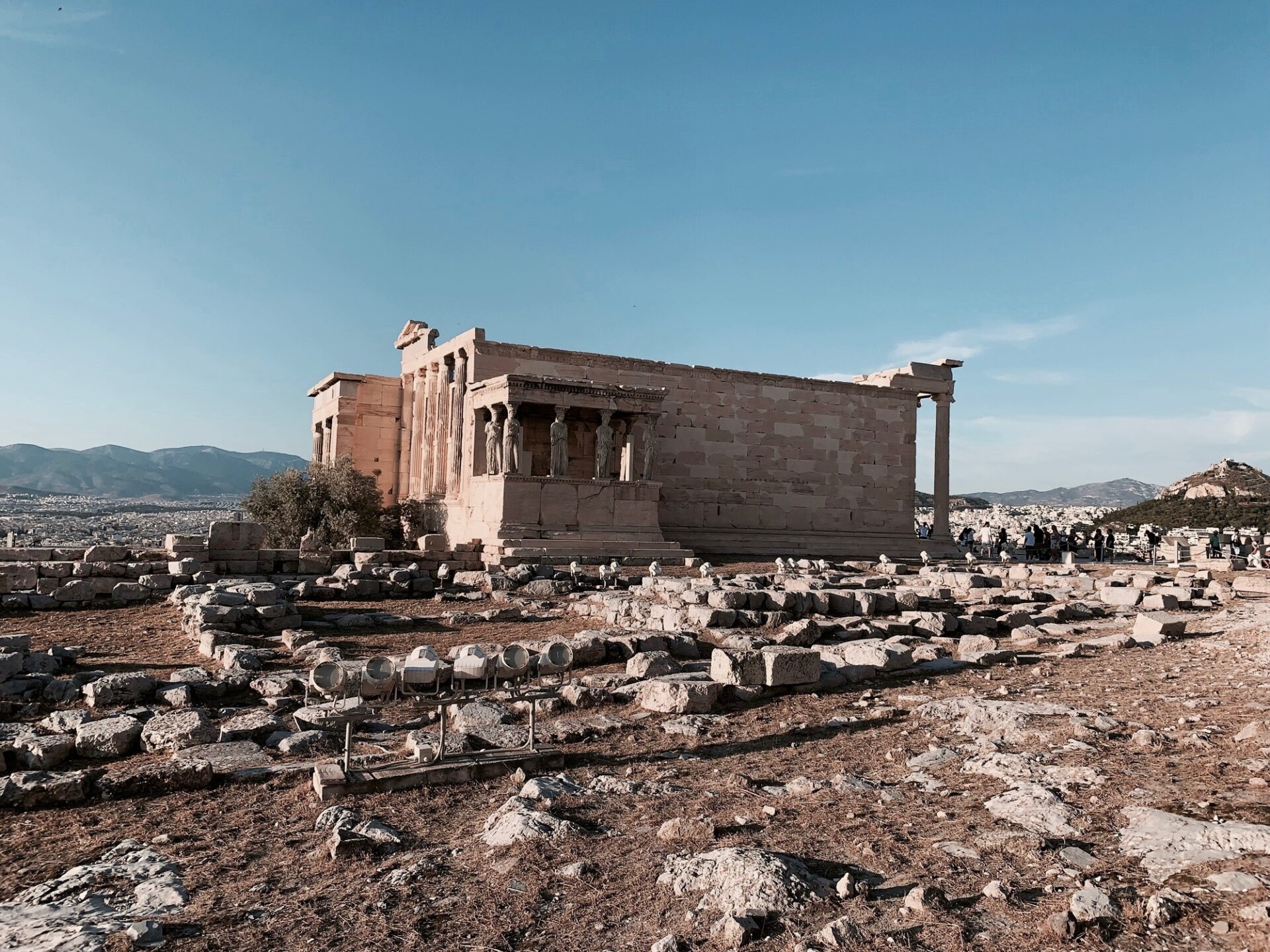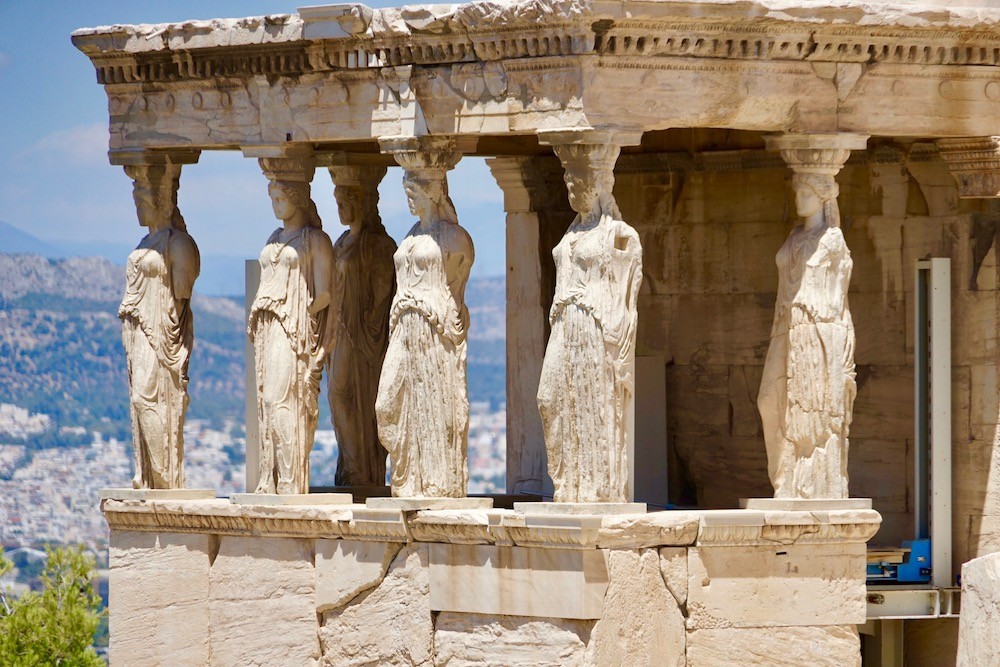An elegant temple constructed in the Ionic style, the Erechtheion lies on the northern side of the Acropolis. When visiting the Parthenon, we highly recommend you spend time viewing this stunning ancient building up close, as it’s one of the most striking historical buildings in all of Athens.

Dedicated to the Greek god Poseidon and the goddess Athena, the temple was built at the same time as the Parthenon and was designed by Classical Greek architect Mnesikles. It actually replaced the “Archaios Neos” (Ancient Temple) of Athena Polias, part of which had been destroyed by the Persians sixty years earlier.
The new temple was divided into two chambers: an eastern room dedicated to Athena and a lower western room that houses shrines of Poseidon-Erechtheus, Hephaistos, and Boutes, the brother of Erechtheus.
The Erechtheion’s unique form resulted from the architect’s need to accommodate all of these figures within one building, while also adapting its structure to the site’s uneven ground.
An Ionic frieze surrounded the Erechtheion’s main building and north porch, decorated with figures of gods, heroes and mortals. The figures were almost fully carved, and they were created from white Parian marble and attached with metal fasteners to slabs of grey Eleusinian limestone.
Notable features include the sacred olive tree to the south-west, the mark of Poseidon’s trident to the north marked by the saltwater well and this sacred site is also said to be the burial place of Kings Kekrops and Erechtheus.

The Erechtheion’s best-known feature by far is the south porch, whose roof, instead of being supported on columns, rested on the heads of six Korai statues – the famous Caryatids. Created by Alkamemes or Kallimachos, the statues were later named Caryatids after the young women from Karyes of Laconia who danced in honour of the goddess Artemis. Five of them are now found in the Acropolis Museum, displayed on a special balcony and visible from all sides, while the position of the sixth Kore, still held in the British Museum, has been left empty.
Tips and Information on Visiting the Erechtheion Temple
-If you really want to get to know all the history behind this sacred temple, we suggest a tour by a professional guide. In fact, a good tour will give you a nice overview of the entire Acropolis while also spending time on the history and architecture of the Erechtheion.

-The temple is open every day (excluding public holidays).
-The Acropolis Athens pass covers entry to The Erechtheion. This ticket is valid for 48 hours and covers entry to other archaeologically important sights as well.
-If you visit in summer, we recommend heading to the temple early morning or very late in the afternoon, this will ensure you avoid the heat and the crowds.
-Wear comfortable shoes with a good grip. The marble tends to be slippery.
– Make sure to visit the nearby Acropolis Museum to see the original Caryatids and a host of fascinating archaeological finds from the Acropolis site.

